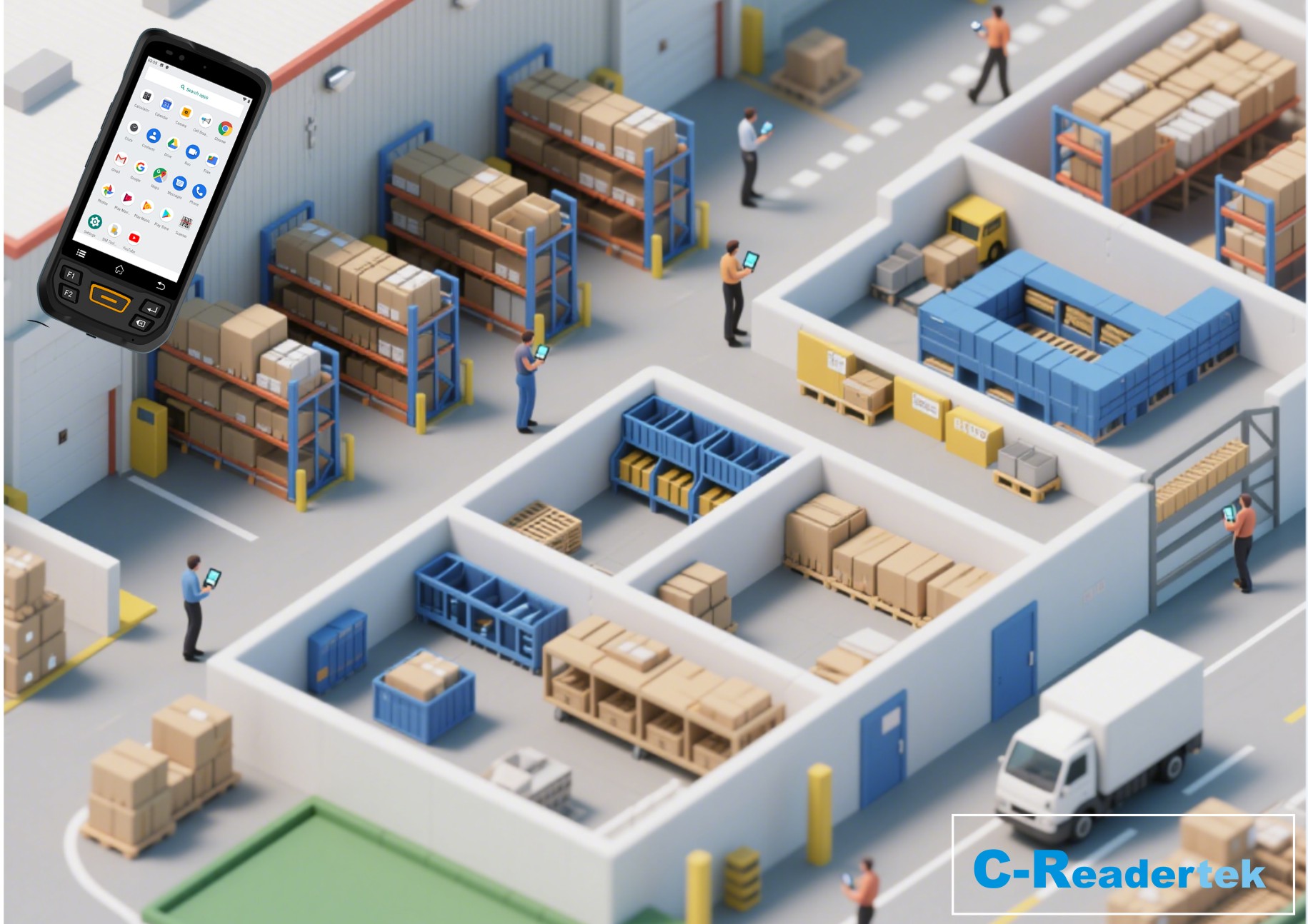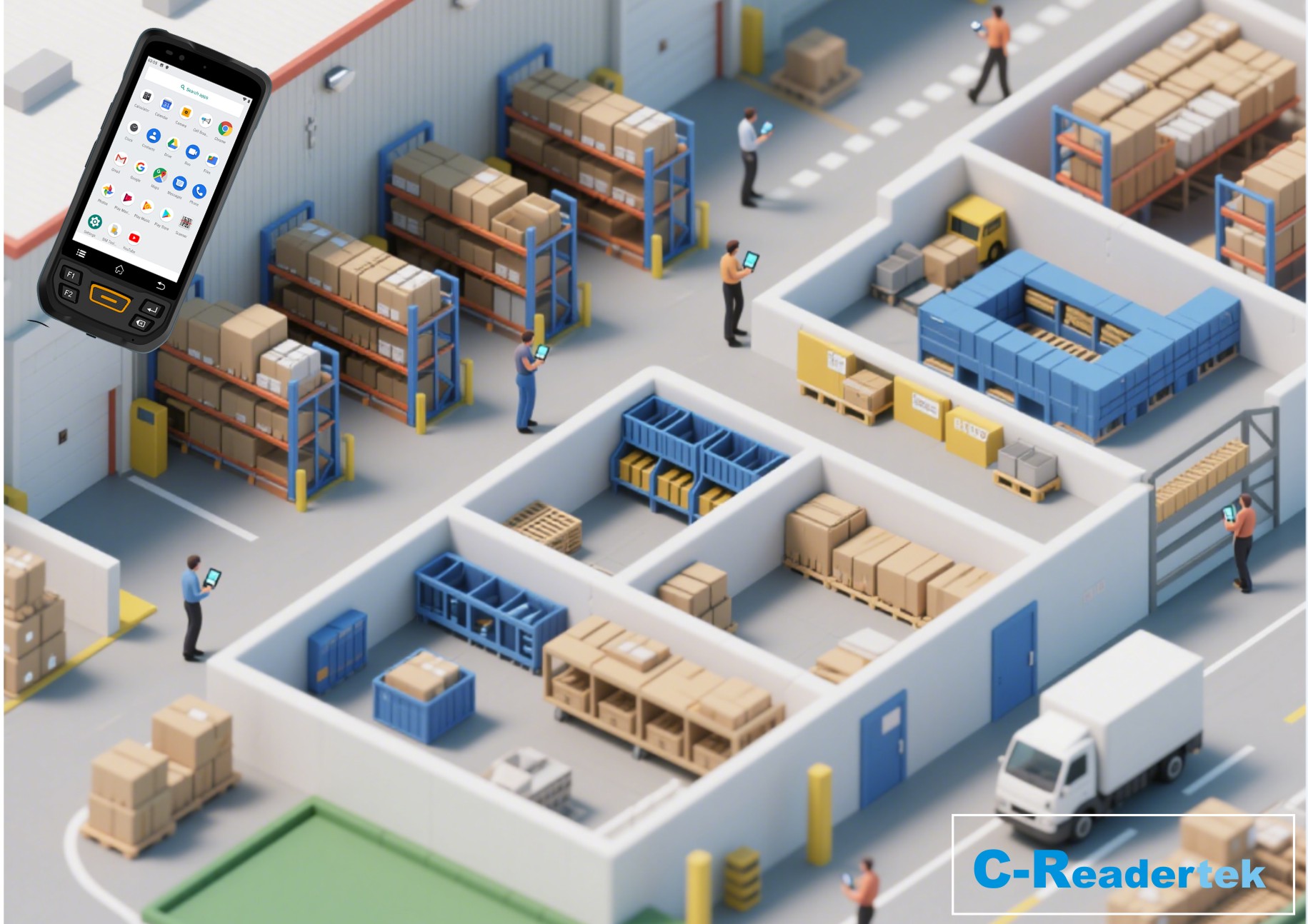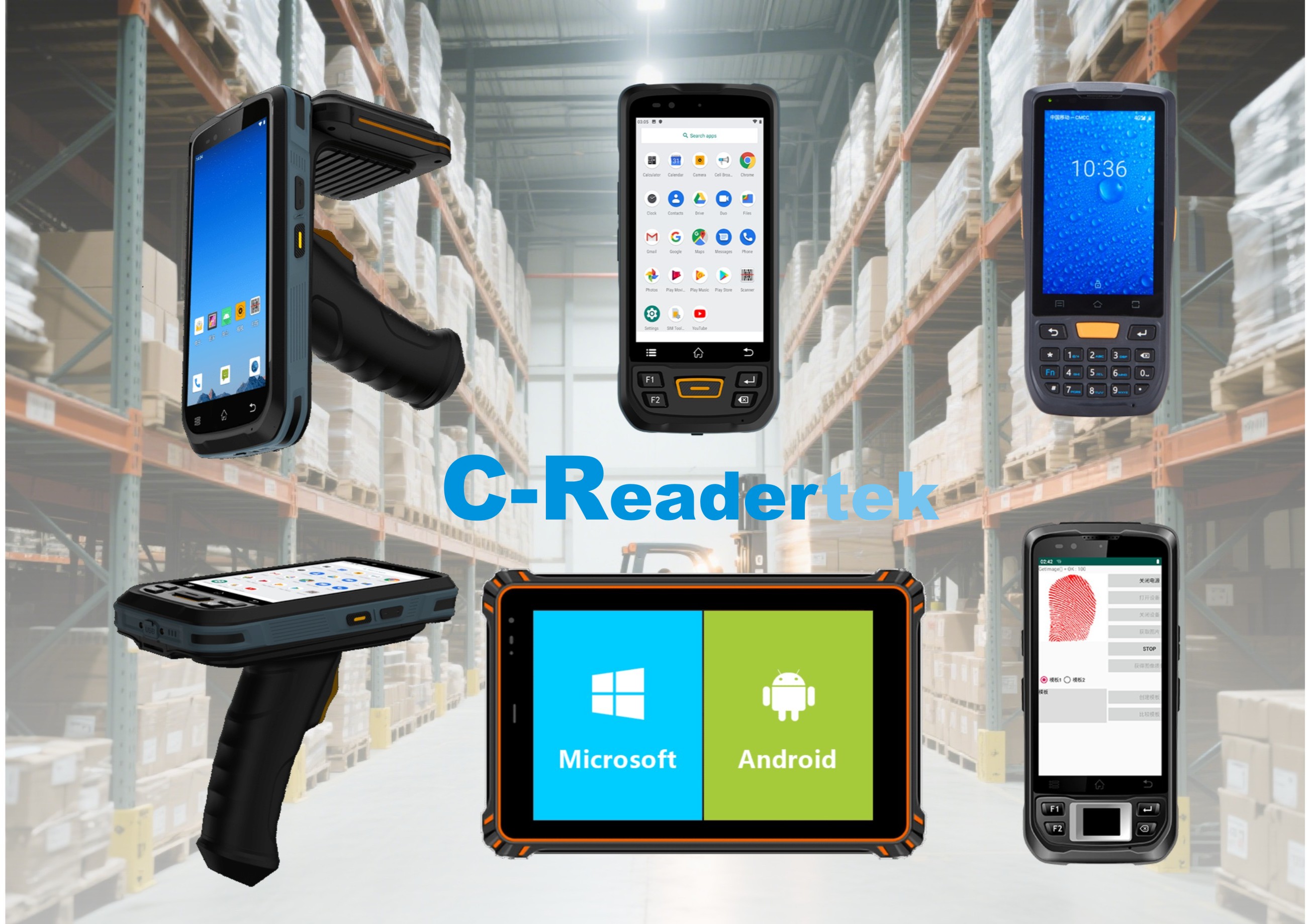Five core applications of handheld mobile computers in smart warehouse management
With the rapid development of the logistics industry and the deepening of digital transformation, portable data collection terminals have become an indispensable and important tool in modern smart warehouse management. Through the deep integration with WMS (warehouse management system) and RFID (radio frequency identification) technology, handheld terminals are completely changing the traditional warehouse operation mode and promoting warehouse management to move towards intelligence, precision and efficiency. Now we will elaborate on the five core applications of handheld terminals in smart warehouse management, demonstrate their practical application value through specific cases and data, and provide reference for the digital transformation of enterprise warehouses.

1. Intelligent upgrade of warehousing management
In traditional warehousing management, warehousing operations often rely on manual records and paper documents, which are not only inefficient but also prone to errors. The application of handheld terminals has completely changed this situation. By scanning the product barcode or reading the RFID tag with a mobile computer, the system can automatically collect product information and upload it to the WMS system in real time to achieve accurate data entry. The WMS system will intelligently recommend the optimal storage location based on factors such as inventory status and product characteristics, and the handheld terminal will guide the operator to complete accurate shelving through a visual interface. The practical data of a well-known e-commerce company shows that after adopting PDA for warehousing management, the single warehousing operation time was shortened from 30 minutes to 18 minutes, and the efficiency was improved by 40%; at the same time, the warehousing error rate was reduced from the original 2.3% to 0.08%, and the accuracy was significantly improved. More importantly, the system automatically records the time nodes and responsible persons of each operation link, achieving full traceability, and providing data support for subsequent quality control and performance evaluation.
2. Intelligent picking and efficient outbound delivery
Picking operation is one of the most labor-intensive and time-consuming links in warehouse management. The introduction of handheld terminals has brought revolutionary changes to picking operations. The WMS system will intelligently plan the optimal picking path based on factors such as order characteristics and warehouse location distribution, and guide operators to efficiently complete picking through real-time navigation of handheld terminals. During the picking process, the handheld terminal will scan and verify to ensure the "five corrects": correct goods, correct quantity, correct location, correct order, and correct time. The application case of a large retail enterprise shows that after picking with handheld terminals, the average daily walking distance of pickers was reduced from 8 kilometers to 3.5 kilometers, and the labor intensity was greatly reduced; the average picking time per order was reduced from 10 minutes to 3 minutes, and the efficiency was improved by 70%; the picking accuracy rate reached 99.97%, and the customer complaint rate decreased by 85%. In addition, handheld terminals also support a variety of advanced picking modes, such as wave picking, batch picking, voice picking, etc., which can meet the needs of different business scenarios.
3. Efficient and accurate inventory counting
Inventory counting is an important task in warehouse management. The traditional manual inventory counting method is not only time-consuming and labor-intensive, but also prone to errors. The handheld terminal combined with RFID technology has achieved a qualitative leap in inventory counting operations. The RFID reader can identify multiple tags at the same time, and the handheld terminal can quickly collect inventory information within a range of 1-3 meters. The inventory counting efficiency is more than 10 times that of the traditional method. The inventory counting data is uploaded to the WMS system in real time, and the inventory difference report is automatically generated. Managers can quickly locate the problem and take corresponding measures. The practice of a multinational manufacturing company shows that after using handheld terminals + RFID for inventory counting, the inventory counting time of the entire warehouse is shortened from the original 2 working days to 2 hours, and the efficiency is improved by 90%; the inventory counting accuracy rate reaches 99.95%, which is much higher than the 98.5% of manual inventory counting. More importantly, this inventory counting method supports the "dynamic inventory" mode, which can be carried out without affecting the normal in and out warehouse operations, greatly improving the continuity of warehouse operations. The system will also automatically record abnormal situations during the inventory counting process to provide data basis for inventory management optimization.
4. Accurate warehouse transfer and allocation management
In large warehouse centers, the transfer and allocation of goods are regular operations. In traditional methods, warehouse transfer information is often difficult to update in time, which easily leads to inaccurate inventory data. Handheld terminals perfectly solve this problem through real-time data collection and transmission. Operators use handheld terminals to scan product and warehouse location labels, and the system will automatically update inventory location information to ensure that the accounts are consistent. Managers can remotely issue allocation instructions through the WMS system, and PDAs receive and guide the execution of operations in real time. Application data of a third-party logistics company shows that after using PDA for warehouse transfer management, the accuracy of inventory data increased from 92% to 98.5%; the efficiency of transfer operations increased by 35%; and order delays caused by inaccurate inventory information decreased by 80%. The system will also automatically record the detailed information of each transfer operation, including the operator, time, quantity, etc., to achieve full traceability and provide strong support for management decisions.
5. Full-process data traceability and analysis
Another important value of handheld terminals is that they realize data collection and traceability of the entire process of warehousing operations. From the entry, storage, picking to the delivery of goods, the operation data of each link will be fully recorded and uploaded to the WMS system in real time. These data include key elements such as operators, operation time, product information, and warehouse location information. Based on these data, enterprises can build multi-dimensional analysis models: in terms of quality management, they can quickly locate problematic goods and links; in terms of performance management, they can objectively evaluate employee operating efficiency; in terms of process optimization, they can identify bottlenecks and improve operating modes. The application case of a pharmaceutical company shows that through the PDA data traceability system, 100% batch traceability capability is achieved, which fully meets the GSP certification requirements; at the same time, through the analysis of operation data, the warehouse layout and operation process are optimized, and the overall operation efficiency is improved by 25%. In addition, these data can also be connected with ERP, TMS and other systems to realize the visual management of the entire supply chain process.
Summary and Outlook
The five core applications of handheld terminal PDA in smart warehousing management cover the entire business process from warehousing to outbound delivery, and achieve multiple goals of efficiency improvement, cost reduction and quality assurance through technological innovation. Actual application data shows that enterprises using PDA+WMS+RFID solutions generally improve warehousing operation efficiency by 30%-50%, reduce error rate to below 0.1%, and save 20%-30% of labor costs. With the continuous development of new technologies such as 5G, Internet of Things, and artificial intelligence, the application of PDA in smart warehousing will be more in-depth: 5G networks will increase data transmission speeds, the Internet of Things will expand the range of device connections, and artificial intelligence will optimize the decision-making process. In the future, handheld PDAs will not only be data collection tools, but will also become decision-making terminals for smart warehousing, pushing warehousing management towards a higher level of intelligence. For companies that are promoting digital transformation, early deployment of PDA applications will be an important strategic choice to enhance warehousing competitiveness.
To learn more about how C-readertek can provide solutions and services to simplify your business, please visit: www.c-readertek.net
 NFC Technology: Ushering in a
NFC Technology: Ushering in a
 How to choose a suitable handh
How to choose a suitable handh
 Five core applications of hand
Five core applications of hand
 Handheld Mobile Computer - Chi
Handheld Mobile Computer - Chi